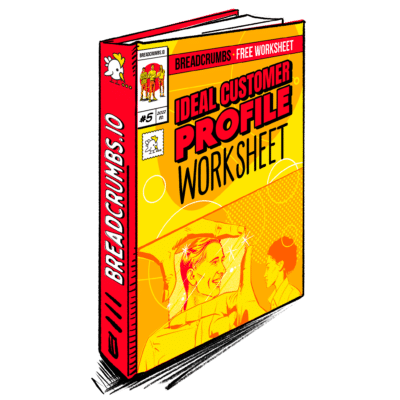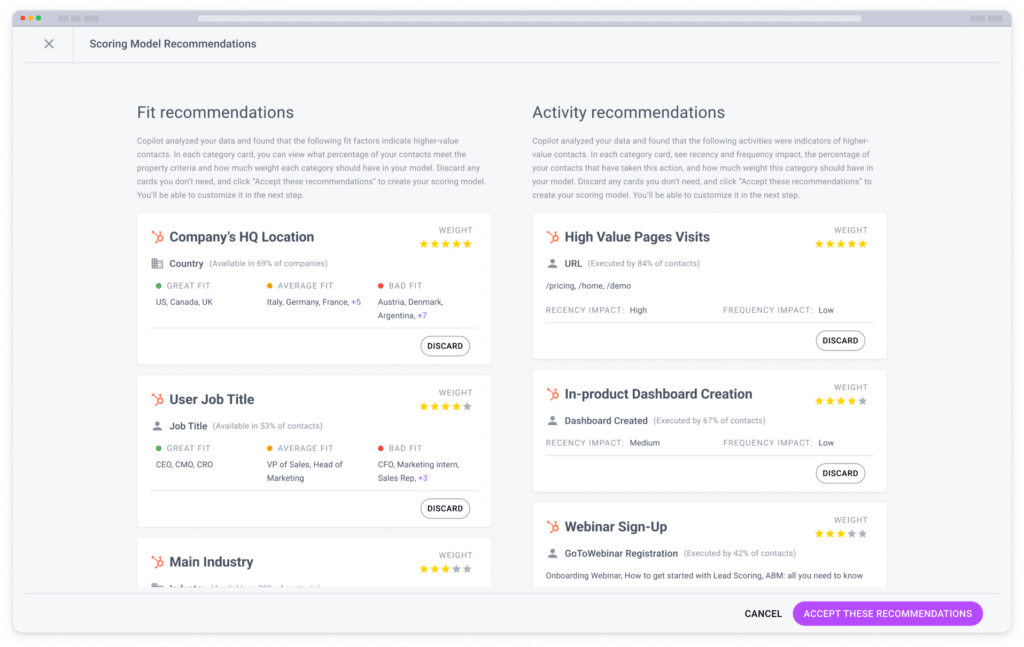DEFINITION
Lead qualification is a systematic process utilized by businesses to evaluate potential customers based on their financial capacity and willingness to purchase. This critical procedure helps identify which prospects are the most viable sales targets and plays an integral role in any effective sales strategy.
💡Understanding Lead Qualification
Lead qualification goes beyond merely collecting a set of names, email addresses, or phone numbers. It’s about meticulously predicting which of these leads, these potential customers, are likely to convert into actual customers. The challenge lies in accurately assessing a lead’s interest level, financial capacity, and readiness to purchase.
To fully comprehend the essence of lead qualification, we must first understand the problem it solves. In sales, time is of the essence. Sales representatives cannot afford to spend their valuable time on leads that are unlikely to convert. Without a clear indication of a lead’s potential, sales teams could end up wasting their efforts on unqualified prospects, leading to inefficient use of resources and missed opportunities.
This is where lead qualification steps in as a solution. It provides a structured approach to evaluate each lead against specific criteria, such as the lead’s position in the buying cycle, their need for your product or service, and their budget. The process involves comparing the leads against your Ideal Customer Profile (ICP) to determine if they would be a good fit.

Ebook
Ideal Customer Profile (ICP) Worksheet
Learn how to create an Ideal Customer Profile and build a successful sales strategy with this Ideal Customer Profile (ICP) Worksheet.
If a lead matches your ICP and is deemed likely to purchase, they’re considered “qualified,” primed for further engagement in the sales process.
🖋 Takeaway
The key takeaway from understanding lead qualification is recognizing its role in optimizing sales efforts. By focusing on qualified leads, sales teams can prioritize their time and resources on prospects with genuine interest and potential in purchasing. This process significantly increases the likelihood of conversion, leading to more successful sales outcomes.
With this in mind, it becomes evident that implementing a robust lead qualification process is beneficial for businesses aiming to maximize their sales productivity. It’s about making informed decisions on where to direct your sales efforts, ensuring every interaction counts, and bringing you closer to achieving your sales goals.
Ready to accelerate your revenue?
Start closing better deals faster, expanding into your customer base and holding on to customers longer (we do retention too)!
What is lead qualification, and how does it relate to lead scoring?
Lead qualification is the process of assessing the potential of leads, (i.e., prospective customers,) to determine their likelihood of becoming paying customers. It involves evaluating leads based on specific criteria such as their level of interest, buying capacity, and fit with your product or service.
Lead scoring, on the other hand, is a quantitative method used in the lead qualification process. It involves assigning numerical values or “scores” to leads based on various attributes such as their behavior, engagement level, and demographic information. The higher a lead’s score, the more likely they are to convert, allowing sales teams to prioritize their efforts effectively.

How to qualify a lead?
Qualifying a lead involves a series of steps, beginning with understanding your buyer profile. This profile serves as a benchmark against which you assess the leads.
The next step is to distinguish between intent and interest. While interest indicates a lead’s curiosity about your product or service, intent signifies their readiness to purchase.
Finally, ensure your product or service meets the lead’s needs and falls within their budget. These steps together form a comprehensive approach to qualifying sales leads.
What is the process of lead qualification using a lead scoring system?
The process of lead qualification using a lead scoring system typically involves the following steps:
- Identifying Scoring Criteria: This involves determining the attributes that indicate a lead’s potential to convert. These can include demographic factors (like industry, job title, and company size), behavioral indicators (like website visits, content downloads, email opens), and engagement level with your marketing activities.
- Assigning Scores: Once the criteria are identified, you assign point values to each based on their significance in indicating a lead’s likelihood to convert.
- Scoring Leads: As leads interact with your business, they accumulate points based on their actions and characteristics.
- Prioritizing Leads: Leads with higher scores are deemed more likely to convert and, therefore, prioritized by the sales team for further engagement.

Get started for free today!
What are the lead qualification stages?
The lead qualification process can be broken down into several stages. Initially, marketing teams generate a pool of leads through various campaigns. These leads are then evaluated based on predetermined criteria to identify Marketing Qualified Leads (MQLs), who have shown some level of interest in your offerings. MQLs are then nurtured further until they demonstrate a clear intent to purchase, at which point they become Sales Qualified Leads (SQLs). SQLs are then handed over to the sales team for further engagement and conversion.
What is the difference between marketing qualified leads (MQLs) and sales qualified leads (SQLs)?
Marketing Qualified Leads (MQLs) are leads who have engaged with your marketing activities, showing a degree of interest in your product or service, but are not yet ready to buy. These leads are typically nurtured further by the marketing team until they demonstrate a clear intent to purchase.
Sales Qualified Leads (SQLs), on the other hand, are leads who have shown a strong intent to buy and have met specific criteria that qualify them as ready for a direct sales follow-up. These leads are passed on from the marketing team to the sales team for further engagement and conversion.
What is the role of demographic and behavioral data in lead qualification?
Demographic and behavioral data play a crucial role in lead qualification. Demographic data, such as age, gender, job title, location, and company size, can help determine if a lead fits your ideal customer profile.
Behavioral data, on the other hand, provides insights into a lead’s interactions with your business. This can include website visits, content downloads, email opens, clicks, and social media engagement. Such data can indicate a lead’s interest level and readiness to buy, aiding in the qualification process.
What is lead qualification in Salesforce?
In the context of Salesforce, a popular customer relationship management (CRM) platform, lead qualification refers to the process of assessing and categorizing leads within the system. Salesforce provides tools to score and rank leads based on various criteria, allowing sales teams to prioritize their efforts effectively. It also facilitates tracking the lead’s journey through the sales funnel, providing valuable insights to refine the lead qualification process.
What is inbound lead qualification?
Inbound lead qualification involves evaluating leads who have expressed interest in your business by initiating contact themselves. These leads could come through various inbound marketing channels, such as website forms, content downloads, or email subscriptions.
The qualification process involves assessing these leads to determine their interest level, need for your product or service, and readiness to purchase. Inbound lead qualification helps filter out the most promising leads from the influx of inquiries, enabling sales teams to focus their efforts on high-potential prospects.
Lead qualification is critical in the sales process, helping businesses identify and focus on the most promising prospects. Companies can optimize their sales efforts by understanding and effectively implementing lead qualification, improving conversion rates and sales outcomes.
What is the impact of lead qualification on sales efficiency and conversion rates?
Lead qualification has a significant impact on both sales efficiency and conversion rates. By identifying and prioritizing high-potential leads, sales teams can focus on prospects more likely to convert, thereby increasing sales efficiency.
Watch what our customers say
“Life before Breadcrumbs was, I think you could call it the Dark Ages. We started with an SLA of two days to a week sometimes. And we’re getting within the 10 to 5-minute mark. So that’s so exciting for us.”

Christie Horsman, VP of Marketing, Thinkific
This targeted approach not only saves time and resources but also leads to higher conversion rates as sales efforts are directed towards leads who are ready and willing to buy.
What is the BANT (Budget, Authority, Need, Time) framework, and how is it used in lead qualification?
The BANT (Budget, Authority, Need, Time) framework is a popular method used in lead qualification. It involves assessing leads based on four key criteria:
- Budget: Does the lead have the financial resources to purchase your product or service?
- Authority: Does the lead have the decision-making power or influence to authorize the purchase?
- Need: Does the lead have a clear need or problem that your product or service can solve?
- Time: Is the lead planning to purchase within an acceptable timeframe?
By evaluating leads against these criteria, sales teams can determine whether a prospect is worth pursuing, helping them prioritize their efforts effectively.
Ready to accelerate your revenue?
Start closing better deals faster, expanding into your customer base and holding on to customers longer (we do retention too)!
-
What Is Lead Scoring?
Read more: What Is Lead Scoring?Lead scoring is the method of assigning points to contacts or potential prospects based on…
-
What is BANT?
Read more: What is BANT?BANT is an acronym that stands for Budget, Authority, Need, and Timeline. It is a…
-
What is Co-Dynamic Distribution?
Read more: What is Co-Dynamic Distribution?Co-dynamic distribution is a lead scoring practice in which leads are scored based on both…
